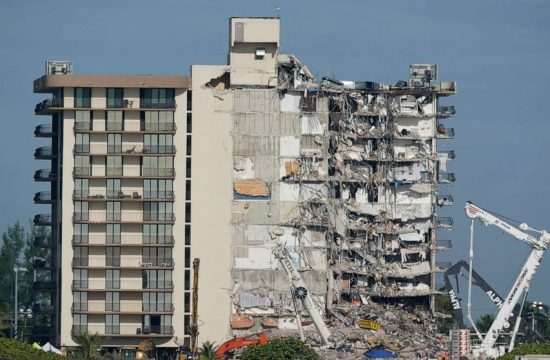A fire at a North Carolina fertilizer plant packed with 600 tons of highly explosive ammonium nitrate continued to burn out of control on Tuesday, forcing firefighters to abandon the scene and prompting the evacuation of roughly 6,500 residents in a mile radius of the facility, officials said.
The blaze at the Weaver Fertilizer Plant in the north ward of Winston-Salem was also belching noxious fumes in the air that the local fire chief described as having the odor of spent fireworks and casting a haze over the city of more than 250,000 people.
The fire was first reported around 6:45 p.m. on Monday and quickly spread throughout the facility, triggering multiple explosions as firefighters raced to the plant, witnesses said.
No injuries have been reported.
Winston-Salem Fire Chief William “Trey” Mayo said during a news conference Tuesday morning that fire crews were only able to battle the blaze for about 90 minutes before conditions grew too hazardous to keep firefighters at the scene.
“So, we decided to abandon the firefighting operation and pull out crews back due the risk of the products that are on site at this facility,” Mayo said.
He said a major concern is the amount of potentially explosive chemicals at the plant, including 500 tons of ammonium nitrate in a storage building and another 100 tons in a rail car next to the building. He said there is an additional 5,000 tons of finished fertilizer stored at the plant.
Asked by reporters how close the flames were to the ammonium nitrate, Mayo responded, “all of it is in the line of fire.”
Stressing how volatile the situation is, Mayo referenced the April 17, 2013, ammonium nitrate explosion at the West Fertilizer Company in West, Texas, that killed 15 people and leveled 150 buildings.
“The quantity of ammonium nitrate they had on hand was 240 tons. When this fire began last night, we had 600 tons on site,” Mayo said. “So, if that doesn’t convey the gravity of this situation and how serious folks need to take it, I don’t know how else to verbalize that.”
Fire officials said earlier Tuesday that water was still being routed to an area of the facility where the ammonium nitrate is being stored in an attempt to keep that section under 400 degrees, which they believe will prevent explosions.
Mayo said firefighters reported hearing several “mini explosions” before they had to retreat.
Mayo said fire officials have been using drones to monitor the blaze and are hoping to send up a fire department hazmat specialist in a North Carolina Highway Patrol helicopter to do more reconnaissance on the conflagration.
He said five strike teams were in position to move in and resume battling the fire as soon as conditions improve, but he added that most first responders were being kept out of a the 1-mile radius danger zone for the time being.
Mayo said about 2,500 homes are within a mile radius of the plant and that about 6,500 people living within the area have been advised to evacuate.
Winston-Salem Mayor Allen Joines said Tuesday morning that the estimated length of the evacuation will likely be extended.
“We have to be very concerned about the noxious air and fumes coming out of the site as we go forward,” Joines said.
Mayo said environmental teams are monitoring the air outside the evacuation zone. He said the threshold for air conditions immediately dangerous to life and health is 100 parts per million of nitrous oxide, and that crews are recording readings of about 65 parts per million of nitrous oxide.
“So, we are not at an immediately dangerous to life and health threshold,” said Mayo, adding that people with respiratory issues should stay inside with their doors and windows closed.
Capt. Matthew Smith of the North Carolina Hazardous Materials Regional Response Team 5 said experts have advised him that the threat of more explosions is expected to last up to 36 hours.
“We’re not to go anywhere near it for 36 hours,” Smith said.
Asked if an investigation is underway into the cause of the fire, Mayo said, “We’re not anywhere near that point in this event.”
He said fire department officials last inspected the plant for code violations on Dec. 21 and that no violations were found.











